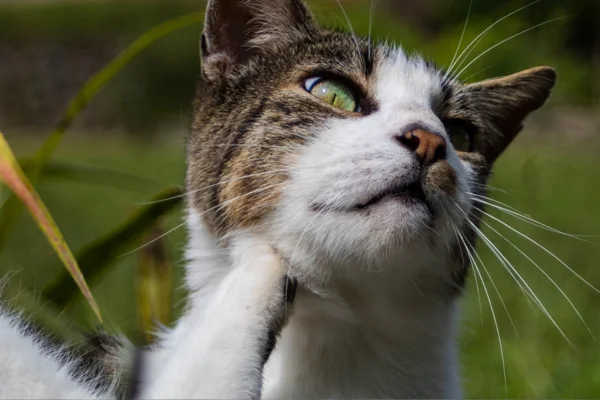The Fascinating World of the Kiwi: New Zealand's Symbol Bird
When we think of New Zealand, one of the first images that comes to mind is that of the kiwi, a unique and emblematic bird of the country. Small, wingless and incredibly adapted to its environment, the kiwi is much more than just a national symbol; it is a treasure of biodiversity that reveals much about the evolution and adaptability of species. Let's explore in depth the biology, behavior and cultural importance of this very special bird.
The Origin and Evolution of the Kiwi
The kiwi belongs to the order Apterygiformes and is native to New Zealand. There are five species of kiwi: the northern brown kiwi, the southern brown kiwi, the large-spotted kiwi, the small-spotted kiwi and the roroa kiwi. All these species share common characteristics, such as the inability to fly, a robust body and feathers that look more like fur than traditional bird feathers.
The evolution of the kiwi is fascinating. It is believed that its flying ancestors arrived in New Zealand millions of years ago. With the absence of predatory mammals and an abundance of resources on the ground, these birds began to evolve towards a terrestrial life. Their wings atrophied, and their legs became stronger, adapted to digging and searching for food on the ground.
Physical Characteristics and Adaptations
One of the most striking features of the kiwi is its long, slender beak, equipped with nostrils at the tip. This is unique among birds, as most have nostrils at the base of their beaks. This adaptation allows the kiwi to smell insects and other invertebrates hidden in the soil while hunting at night.
The kiwi's eyes are small and have limited vision, but this deficiency is compensated for by an extremely acute sense of smell and keen hearing. The kiwi's legs are muscular and strong, perfect for digging and defending itself from possible predators. In addition, its feet have sharp claws that are used both for digging and for protection.
Behavior and Food
The kiwi is a nocturnal bird, preferring to hunt at night to avoid predators and taking advantage of the stillness of the night to locate its prey. Their diet consists mainly of invertebrates such as earthworms, insect larvae, beetles and even small crustaceans. They also eat a variety of fruits and seeds, supplementing their diet with essential nutrients.
To find food, the kiwi uses its sensitive beak to probe the ground, listening and sensing the movement of its prey. Its long, sticky tongue helps it capture and ingest these small animals. This nocturnal and subterranean behavior is one of the factors that contributed to the kiwi's survival, allowing it to adapt to a specific ecological niche where there is less competition for food.
Reproduction and Life Cycle
Kiwi reproduction also has interesting features. They form monogamous pairs that can last a lifetime. The male courts the female with vocalizations and dances, and once the pair is formed, they share a territory.
The kiwi's reproductive process is notable for the size of the eggs that the females produce. Proportionally, the kiwi egg is one of the largest in the world in relation to the size of the bird's body. An egg can weigh up to 20% of the female's body weight, which is extremely exhausting for her. After laying the egg, the male usually takes responsibility for incubating it, a process that can last 70 to 80 days.
Cultural Importance and Conservation
In Maori culture, the kiwi is a symbol of admiration and respect. The word "kiwi" is derived from the sound of the bird's call, and it is deeply rooted in New Zealand's national identity. New Zealanders are affectionately called "kiwis", reflecting the cultural importance of this bird.
Unfortunately, the kiwi is listed as a vulnerable species. The introduction of mammalian predators, such as cats, dogs, ermines and rats, has had a devastating impact on kiwi populations. These predators prey on eggs, chicks and adults. In addition, habitat destruction due to deforestation and human development has also contributed to the decline in kiwi populations.
Conservation Efforts
Various conservation initiatives are underway to protect the kiwi and ensure its long-term survival. Captive breeding programs and the relocation of eggs and chicks to safe areas are some of the strategies adopted. Organizations such as New Zealand's Department of Conservation (DOC) and various local and international NGOs work tirelessly to monitor and protect kiwi habitats.
In addition, public awareness is a crucial part of conservation efforts. Educational campaigns aim to inform the population about the importance of the kiwi and how each individual can contribute to its preservation, whether through donations, volunteering or responsible practices of coexistence with nature.
Curiosities about the Kiwi
- No visible wingsAlthough they have wings, they are so small that they are practically invisible under their feathers.
- Long lifeA kiwi can live between 25 and 50 years, depending on the conditions of its habitat.
- Broad territories: Kiwis are highly territorial and can occupy areas ranging from 2 to 100 hectares.
- Loners: Outside of the mating season, kiwis are solitary creatures and prefer to live alone in their territories.
- Good swimmers: Despite being land birds, kiwis are surprisingly good swimmers.
The Future of the Kiwi
Protecting the kiwi is essential not only for the preservation of a unique species, but also for maintaining the ecological balance of New Zealand's habitats. The kiwi is an indicator species, which means that its health reflects the general health of the ecosystem in which it lives. Continued conservation efforts and public support are key to ensuring that future generations can continue to admire this incredible bird.
In conclusion, the kiwi is a wonder of nature, with unique adaptations and immense cultural importance. Its study and preservation is not only a matter of scientific interest, but also of national pride and environmental responsibility. Protecting the kiwi is protecting a vital piece of New Zealand's natural heritage.









